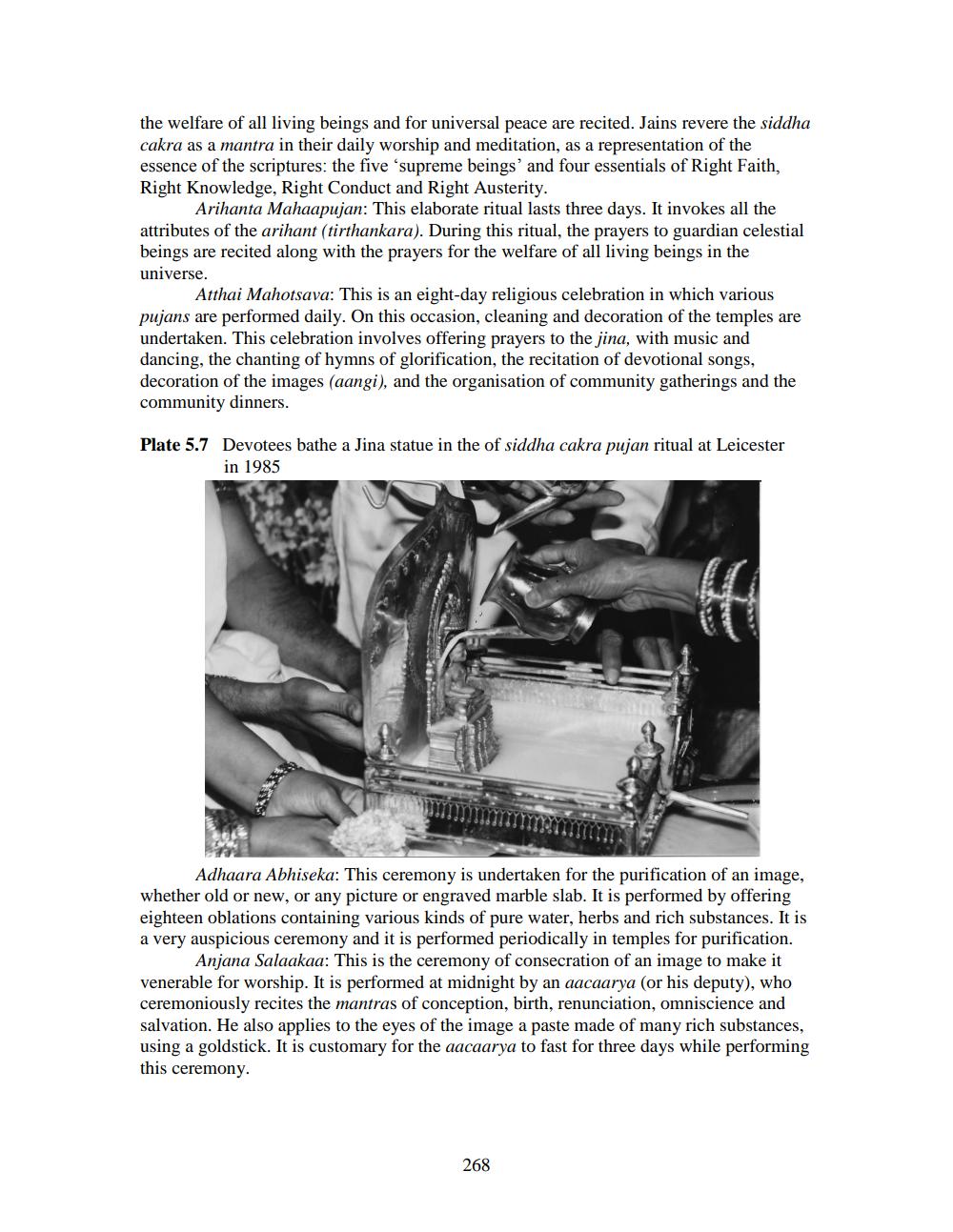________________
the welfare of all living beings and for universal peace are recited. Jains revere the siddha cakra as a mantra in their daily worship and meditation, as a representation of the essence of the scriptures: the five 'supreme beings' and four essentials of Right Faith, Right Knowledge, Right Conduct and Right Austerity.
Arihanta Mahaapujan: This elaborate ritual lasts three days. It invokes all the attributes of the arihant (tirthankara). During this ritual, the prayers to guardian celestial beings are recited along with the prayers for the welfare of all living beings in the universe.
Atthai Mahotsava: This is an eight-day religious celebration in which various pujans are performed daily. On this occasion, cleaning and decoration of the temples are undertaken. This celebration involves offering prayers to the jina, with music and dancing, the chanting of hymns of glorification, the recitation of devotional songs, decoration of the images (aangi), and the organisation of community gatherings and the community dinners.
Plate 5.7 Devotees bathe a Jina statue in the of siddha cakra pujan ritual at Leicester
in 1985
Adhaara Abhiseka: This ceremony is undertaken for the purification of an image, whether old or new, or any picture or engraved marble slab. It is performed by offering eighteen oblations containing various kinds of pure water, herbs and rich substances. It is a very auspicious ceremony and it is performed periodically in temples for purification.
Anjana Salaakaa: This is the ceremony of consecration of an image to make it venerable for worship. It is performed at midnight by an aacaarya (or his deputy), who ceremoniously recites the mantras of conception, birth, renunciation, omniscience and salvation. He also applies to the eyes of the image a paste made of many rich substances, using a goldstick. It is customary for the aacaarya to fast for three days while performing this ceremony.
268




